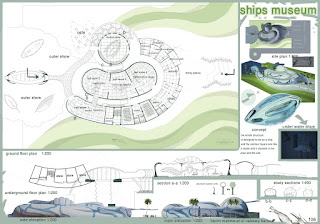Existing Buildings Retrofitting, Stakeholders and their roles
We are living in existing structures, built
environment is our present, while most of the new constructions are green buildings,
we are heading for a greener and sustainable future, and as a result we should
realize how the built environment impacts our daily life to emphasize the
importance of sustainability improvement in existing buildings.
We can raise the debate of either emphasizing
existing buildings development against the importance of greening the future,
while the comparison looks strange, but it’s a comparison between which one has
the most impact on our life, our present or our future.
New constructions can have carbon savings
compared to conventional buildings, but it will never match the savings of retrofitted
existing building in terms of energy efficiency as a percentage.
Stakeholders are all the people who have an
interest or any relation with the building and they should all participate in
improving sustainability in the building, this includes owners of the
facilities, occupants, visitors, designers, contractors, marketing, and more!
A Diverse selection to a team is a factor
of success, a variety of disciplines can create more in-depth knowledge of any
strategy and issue that needs action.
Integrated design approach is what creates
the harmony between stakeholders and their environmental goals, to be able to
understand the tools and strategies that can ensure the successful
implementation of sustainability. LEED Existing building operations and
maintenance is a rating system consists of a set of strategies included in
credit system, valuing the efforts of the stakeholders and enables them to
achieve optimal performance for their building in terms of improving energy
efficiency, Reducing water consumption, Enhancing storm water management, Test
and improve indoor air quality, Standardize and document green operations and
maintenance practices, Improve thermal comfort and achieve best waste
management practices.
Stakeholders should
consider mainly community strategies like raising the awareness to the public
about the benefits of having a greener built environment, started making
Non-profit organizations to take part in social activities promoting
sustainability, sharing green strategies and practices.
 Occupants and building visitors can advance
sustainability in their community and their work, start public speaking,
organize events and recruit volunteers. LEED EBOM has made it easier for
occupants to engage in green building practices by offering LEED Dynamic
plaque, it could also transform the way how people are thinking while
monitoring their progress and achievements and adds value to their volunteering
campaigns with results in front of their eyes.
Occupants and building visitors can advance
sustainability in their community and their work, start public speaking,
organize events and recruit volunteers. LEED EBOM has made it easier for
occupants to engage in green building practices by offering LEED Dynamic
plaque, it could also transform the way how people are thinking while
monitoring their progress and achievements and adds value to their volunteering
campaigns with results in front of their eyes.
Benefits of having such measures and
strategies applied should be told to normal users of a building, it is part of
the results, no one will accept getting involved without understanding the real
advantages of the whole process, as people spend 90% of their daily activities indoor,
indoor environmental quality proportions can help!
Improving thermal comfort, better indoor
air quality, proper humidity levels and better controllability over task
lighting, Clean HVAC system and better management in general.
Be part of the development, don’t just watch
it happening away from you, as long as you are part of the society you have to
participate and help it out. It’s a responsibility for all of us.



Comments
Post a Comment